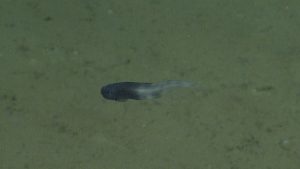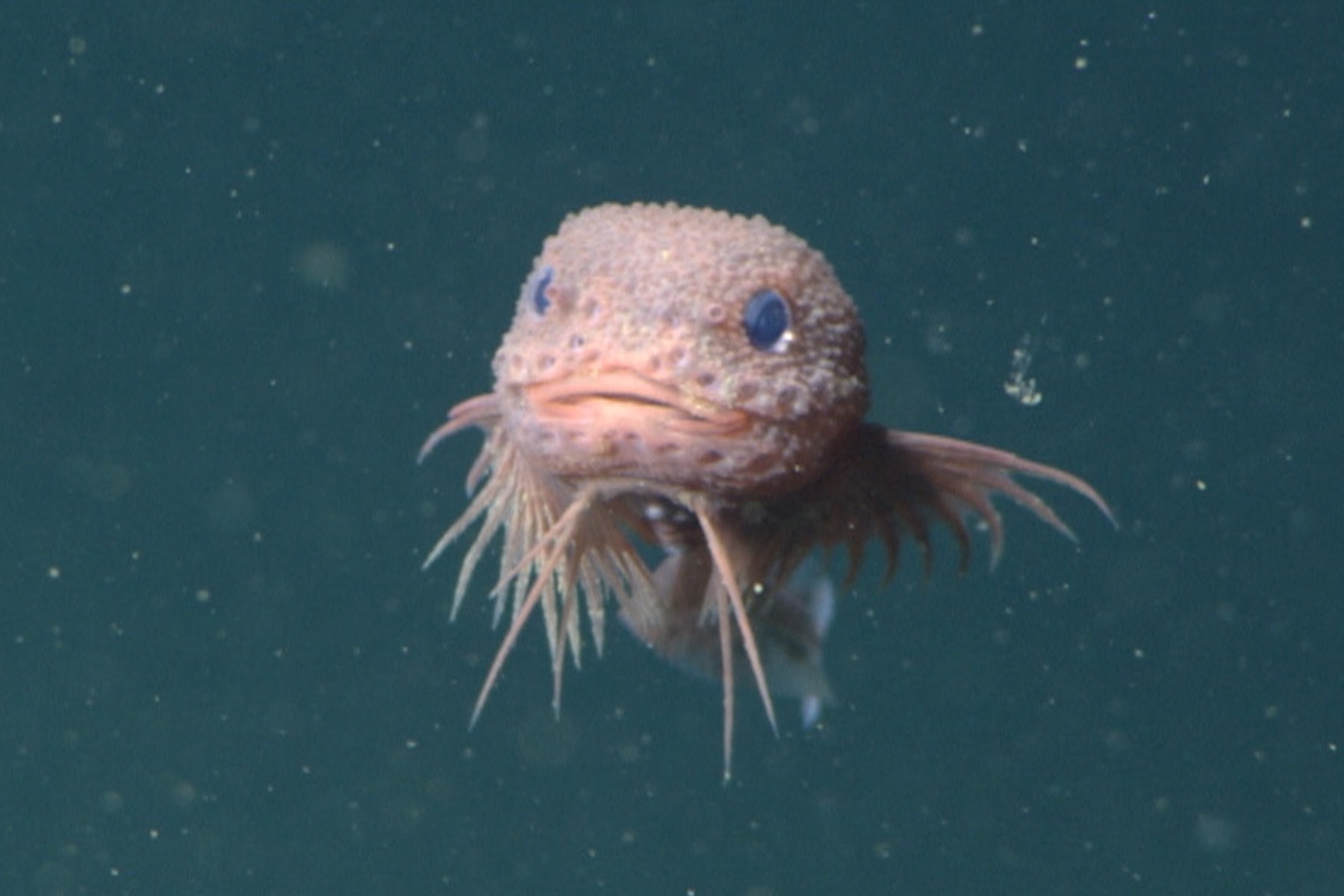New additions to the family
Gerringer and researchers from the University of Montana and the University of Hawaiʻi at Mānoa, including former MBARI postdoctoral fellow Jeff Drazen, examined the bumpy snailfish as part of a comprehensive analysis of three unusual snailfish specimens collected offshore of California. The team combined imaging, morphological, and genetic approaches to compare these snailfishes to other known fishes.
Using microscopy, micro-computed tomography (micro-CT) scanning, and careful measurements, the team collected detailed information about the size, shape, and physical characteristics of the three fishes, distinguishing them from all known species. They also sequenced the DNA of the specimens to compare these animals to other snailfishes and determine their evolutionary position in the family Liparidae. Their examination confirmed that all three snailfishes were new to science. The team has made their CT scan data publicly available via MorphoSource and genetic sequence data via GenBank (PV300955-PV300957 and PV298545-PV298546).
In addition to the bumpy snailfish, the SUNY Geneseo team described the dark snailfish (Careproctus yanceyi) and the sleek snailfish (Paraliparis em).

The bumpy snailfish has a distinctive pink color, a round head with large eyes, wide pectoral fins with long uppermost rays, and a bumpy texture. The dark snailfish has a fully black body with a rounded head and horizontal mouth. The sleek snailfish is distinguished from other snailfishes by a long, black, laterally compressed body, absence of a suction disk, and prominently angled jaw.
Both the dark and sleek snailfishes were collected in 2019 by Drazen and colleagues during an expedition with the submersible Alvin at Station M, a research site operated by MBARI offshore of Central California at a depth of approximately 4,000 meters (13,100 feet). MBARI scientists and researchers worldwide have leveraged a unique 30-year dataset collected by a suite of advanced instruments at Station M to make several important discoveries about abyssal ecosystems and the ocean-climate connection. The species name of the sleek snailfish, Paraliparis em, recognizes this unique research site and the people and programs that have supported the Station M time series.
Haddock’s encounter is the only confirmed observation of the bumpy snailfish, so the full geographic distribution and depth range of this species remain unknown. However, a closer look at MBARI’s extensive archive of underwater video suggests this species may have been previously encountered offshore of Oregon in 2009 and mistaken for a similar species, the bigtail snailfish (Osteodiscus cascadiae).
